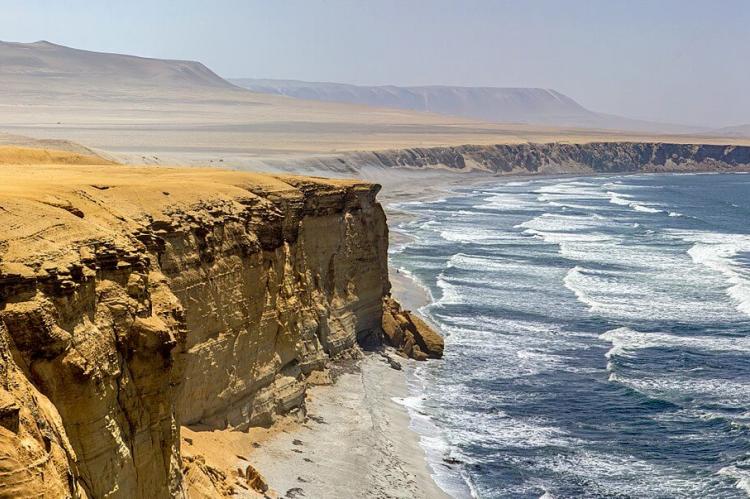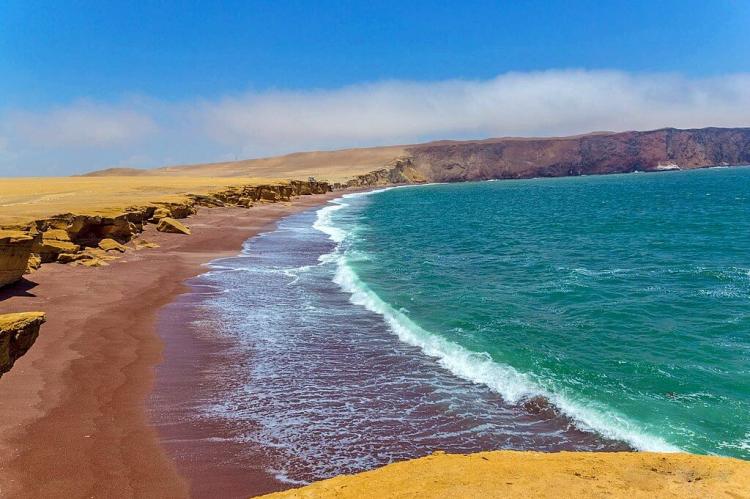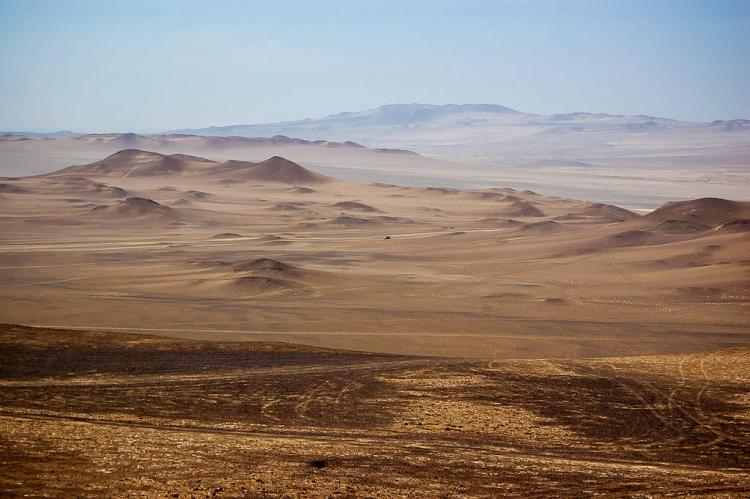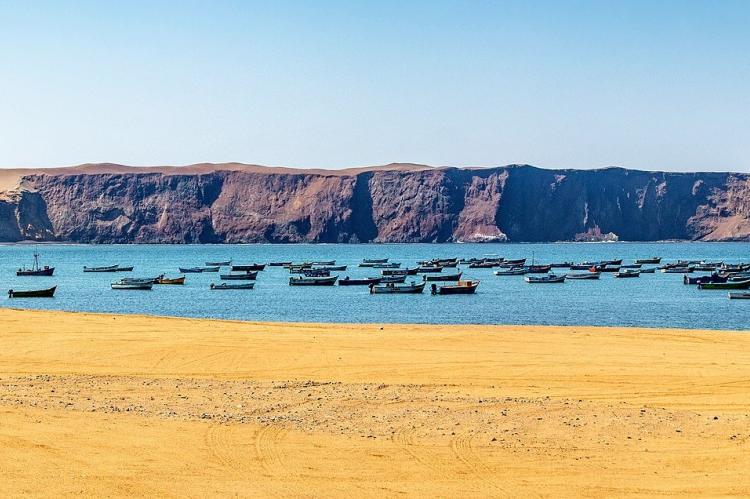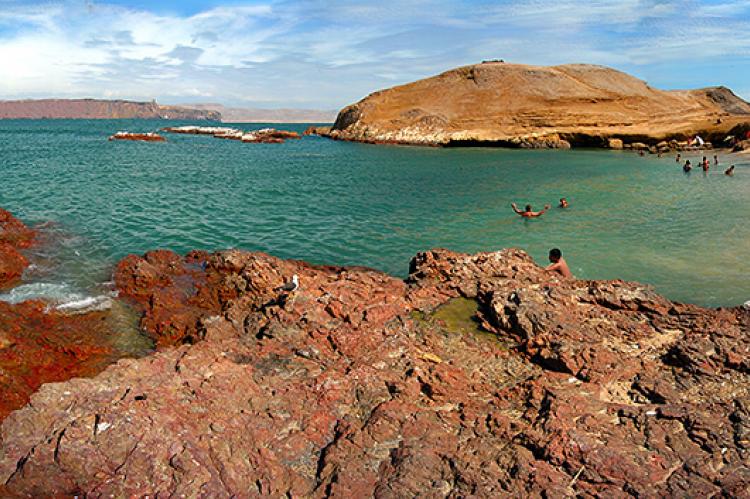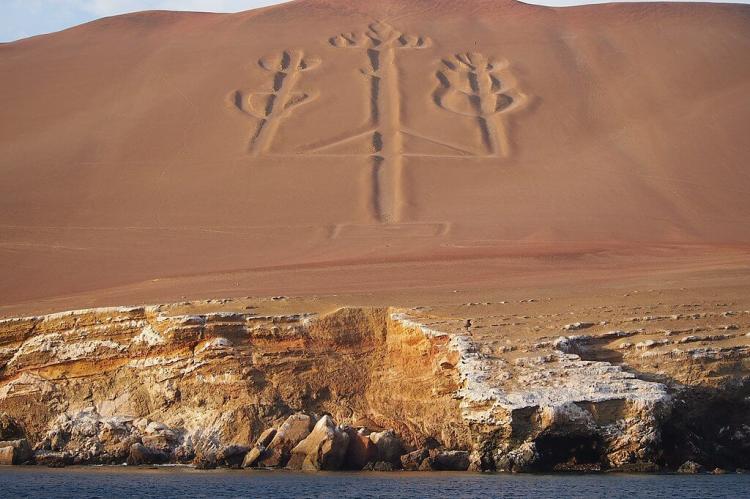Paracas National Reserve: A Coastal Desert Haven in Peru
The Paracas National Reserve is a unique protected area in the Ica region of Peru. It spans coastal desert and marine ecosystems. The reserve encompasses the Paracas Peninsula, Independence Bay, and surrounding desert regions, offering a mosaic of landscapes supporting diverse wildlife.
Exploring Paracas National Reserve: Where Wildlife and Ancient Culture Meet
Paracas National Reserve is a unique protected area located in the Ica region of Peru, approximately 250 km (155 mi) south of the city of Lima. Established in 1975, the reserve spans an impressive 335,000 hectares (827,800 acres) of coastal desert and marine ecosystems, making it a critical conservation area in South America. The reserve encompasses the Paracas Peninsula, Independence Bay, and surrounding desert regions, offering a rich mosaic of landscapes supporting diverse wildlife. In addition to its natural beauty, Paracas is steeped in archaeological history, with remnants of the ancient Paracas culture visible in the region. The combination of ecological significance and cultural heritage makes the Paracas National Reserve an exceptional destination.
A Haven for Marine and Desert Life
Paracas National Reserve protects one of the most diverse marine ecosystems along Peru's coastline. The cold waters of the Humboldt Current, which flows through the region, bring nutrients to the surface, fostering a highly productive environment for marine species. The reserve also includes desert ecosystems, adding to its ecological complexity.
Marine Ecosystems
The coastal waters within the Paracas National Reserve support a thriving marine ecosystem, home to over 150 species of marine birds and a vast array of marine mammals. The reserve harbors one of the largest sea lion colonies in the world and is a crucial breeding ground for Humboldt penguins, cormorants, and Peruvian pelicans. The marine life here includes:
- Mammals: Sei whale, South American fur seal, dusky dolphin, marine otter, sperm whale, humpback whale, common bottlenose dolphin, and South American sea lion.
- Birds: Humboldt penguin, Peruvian pelican, Inca tern, black skimmer, Guanay cormorant, Chilean flamingo, and Peruvian diving petrel.
- Fish: Peruvian hake, skipjack tuna, blue flying fish, copper shark, Peruvian anchoveta, and bigeye tuna.
These species rely on the nutrient-rich waters brought by the Humboldt Current, creating an ideal environment for predators and prey.
Desert Ecosystems
The Paracas Peninsula's desert landscape is characterized by its saline soils, remnants of an ancient seabed. The harsh environment is subject to intense winds known as "paracas," making life difficult for many species. Despite this, several hardy plant species thrive in the desert, including Tiquilia paronychoides, Prosopis pallida, and Tillandsia spp.
The region is also home to various terrestrial animals, such as the Andean condor and Chilean flamingo. The desert's minimal precipitation is primarily absorbed by the Lomas ecosystem, a collection of hills that capture moisture from coastal fog, sustaining life in this otherwise arid zone.
The Ballestas Islands: A Marine Sanctuary
Although not part of the Paracas National Reserve, the Ballestas Islands, located just off the coast, are an essential marine sanctuary protected by the Guano Islands, Islets, and Capes National Reserve System. These small, rocky islands provide crucial habitats for marine birds and mammals, including Humboldt penguins, sea lions, fur seals, and numerous bird species such as the blue-footed booby and Guanay cormorant.
The islands benefit from the Humboldt Current, which brings cold, nutrient-rich waters to the surface. This creates a fertile feeding ground for marine life and allows seabirds and larger predators like sea lions to thrive.
Paracas Peninsula: A Desert Peninsula with Ancient Mysteries
The Paracas Peninsula, located within the reserve, is renowned for its dramatic desert scenery and archaeological significance. It includes the famous Paracas Candelabra, a massive prehistoric geoglyph etched into the northern face of a ridge. The geoglyph, nearly 183 meters (600 feet) tall, dates back to around 200 BCE and is associated with the Paracas culture. The origins and purpose of the Candelabra remain a mystery, inspiring numerous theories and speculation.
The peninsula also features stunning red sand beaches formed from eroded sandstone cliffs, adding to its visual allure. The town of Paracas, located on the northern peninsula, serves as a gateway for visitors exploring the reserve and is a popular stop for cruise ships.
Paracas Bay: A Rich Biological Sanctuary
Paracas Bay, located at the southern end of the Bay of Pisco, is one of the reserve's most important ecosystems. Recognized as a Ramsar wetland, the bay's shallow, semi-enclosed waters foster high biological productivity, supporting a variety of fish, invertebrates, and marine mammals.
The bay's coastline is particularly crucial for bird species, providing shelter, food, and nesting grounds for migratory birds such as the South American flamingo, Peruvian gull, gray gull, Dominican gull, Franklin's gull, Peruvian pelican, and the black skimmer.
The bay is also home to several fish species, including silverside, anchovy, guitarfish, and sardines. Invertebrate species such as Synus cymba and Pagurus edwardssi are also abundant, supporting a complex marine food web.
Paracas Bay is an essential breeding and feeding ground for many marine mammals, including the fine sea lion (Arctophoca australis) and the chusco sea lion (Otaria flavescens). Dolphins, such as the bottlenose dolphin and common dolphin, are frequently seen in the waters, and the bay's algae beds, including Yuyo and sea lettuce, create a rich underwater ecosystem that supports this biodiversity.
Conclusion
Paracas National Reserve is a remarkable convergence of marine and desert ecosystems, boasting a rich diversity of wildlife and a fascinating history. The influence of the Humboldt Current sustains its marine life, while the desert landscape offers a stark yet beautiful contrast, hosting species uniquely adapted to this harsh environment. The area's archaeological treasures, such as the Paracas Candelabra, further enhance its cultural significance. These factors make the Paracas National Reserve a must-see destination for nature lovers, birdwatchers, and those interested in ancient history.


